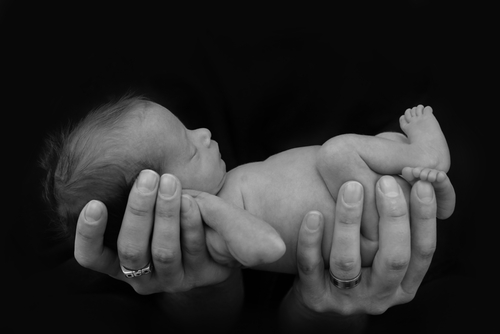Adolescent and young adult cancer survivors may have an increased risk of preterm births and low birth weight, according to a new study.
In particular, women who had Hodgkin’s lymphoma showed a 60 percent higher risk of preterm birth, while those diagnosed with non-Hodgkin’s lymphoma had a two-fold increase in their risk.
Researchers from the University of North Carolina Lineberger Comprehensive Cancer Center suggest the need for additional surveillance of pregnancies in this patient population.
The study, titled “Birth Outcomes Among Adolescent and Young Adult Cancer Survivors,” was published in JAMA Oncology.
“We found that women were more likely to deliver preterm if they’ve been treated for cancer overall, with greater risks for women who had chemotherapy,” Hazel B. Nichols, PhD, a UNC Lineberger member and assistant professor in the UNC Gillings School of Global Public Health, said in a news release.
“While we believe these findings are something women should be aware of, we still have a lot of work to do to understand why this risk is becoming apparent, and whether or not the children who are born preterm to these women go on to develop any health concerns,” she said.
In the U.S., adolescent and young adult (AYA) cancers are defined as those diagnosed between ages of 15 and 39. With continued improvements in early diagnosis and treatment, a growing number of AYA patients with cancer will become long-term survivors, prompting concerns about the late effects of malignancy and treatment in this population.
Studies suggest that 60 percent of female AYA cancer survivors want the possibility of having children. But there is currently limited information available regarding the potential risk of adverse birth outcomes in this population.
In this context, Nichols and her colleagues compared the birth outcomes of AYA cancer survivors with those of women without a cancer diagnosis.
The team used the North Carolina Central Cancer Registry (CCR) to identify female AYA cancer survivors diagnosed from January 2000 to December 2013. They looked at health outcomes for the first child women had after their cancer diagnosis. This included information from 2,598 births from women who were AYA cancer survivors.
“One of the things that’s exciting about this work is we identified thousands of women who went on to have a child after they were diagnosed and treated for cancer,” Nichols said. “We know that cancer treatment can have an impact on fertility, and it’s only after puberty that some of the options exist to either freeze eggs or freeze embryos, or take other steps to protect fertility. So this is a time period when it’s important to counsel women on what their reproductive risks are for cancer therapy, or what they can expect in the future.”
Babies born from AYA cancer survivors had a significantly increased prevalence of preterm birth (before 37 weeks of pregnancy), low birth weight, and cesarean delivery.
Among cancer survivors, 13 percent had a preterm birth, compared to 9 percent of women who never had cancer.
While these are small differences, babies born prematurely have a higher risk of complications, Nichols said, noting, however, that not all preterm babies will have health complications.
“It’s a risk factor; it doesn’t mean that someone who is born preterm is going to develop future health problems, but children who don’t spend as long in utero can have a higher incidence of breathing problems or infections,” she said. “This is something for women and their providers to be aware of when a woman is reviewing her prenatal care, or talking about her medical history with her provider.”
Other factors associated with preterm birth and low birth weight included diagnosis of breast cancer, non-Hodgkin’s lymphoma, or gynecologic cancers. Specifically, the risk for preterm birth for breast cancer survivors was almost two times that of women who never had cancer. In addition, in women diagnosed with Hodgkin’s lymphoma, there was a 60 percent higher risk of preterm birth.
The risk of preterm birth was almost two times higher in women diagnosed with non-Hodgkin’s lymphoma, and three times higher for women with gynecologic cancers.
The higher prevalence of preterm birth and low birth weight was most concentrated among births to women diagnosed during pregnancy. While the researchers believe that women may be delivering earlier to start their cancer treatment as soon as possible, they say that other factors may be involved.
Women who had their cancer diagnosed before they became pregnant also had an increased risk of preterm birth.
They also found that women who were treated with chemotherapy regimens were more likely to have babies born prematurely, and to have delivered their babies by cesarean.
“We’d like to get better information about the types of chemotherapy women receive,” Nichols said. “Chemotherapy is a very broad category, and the agents have very different effects on the body. In the future, we’d like to get more detailed information on the types of drugs that were involved in treatment.”
“These are risks that are important to understand, but also should be considered in light of the fact that these women went on to start their families, or complete their families,” Nichols added. “So that’s a very positive event.”


